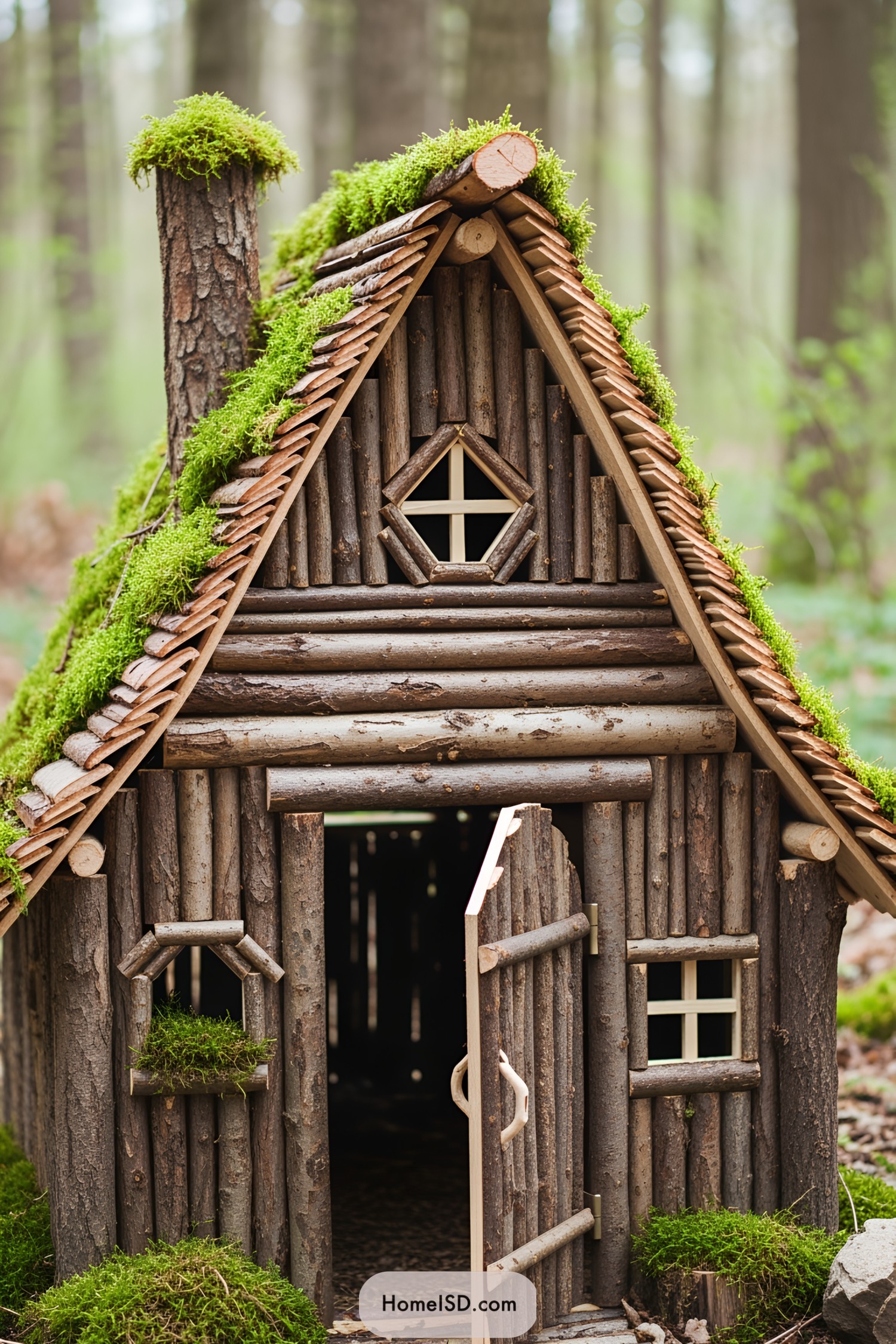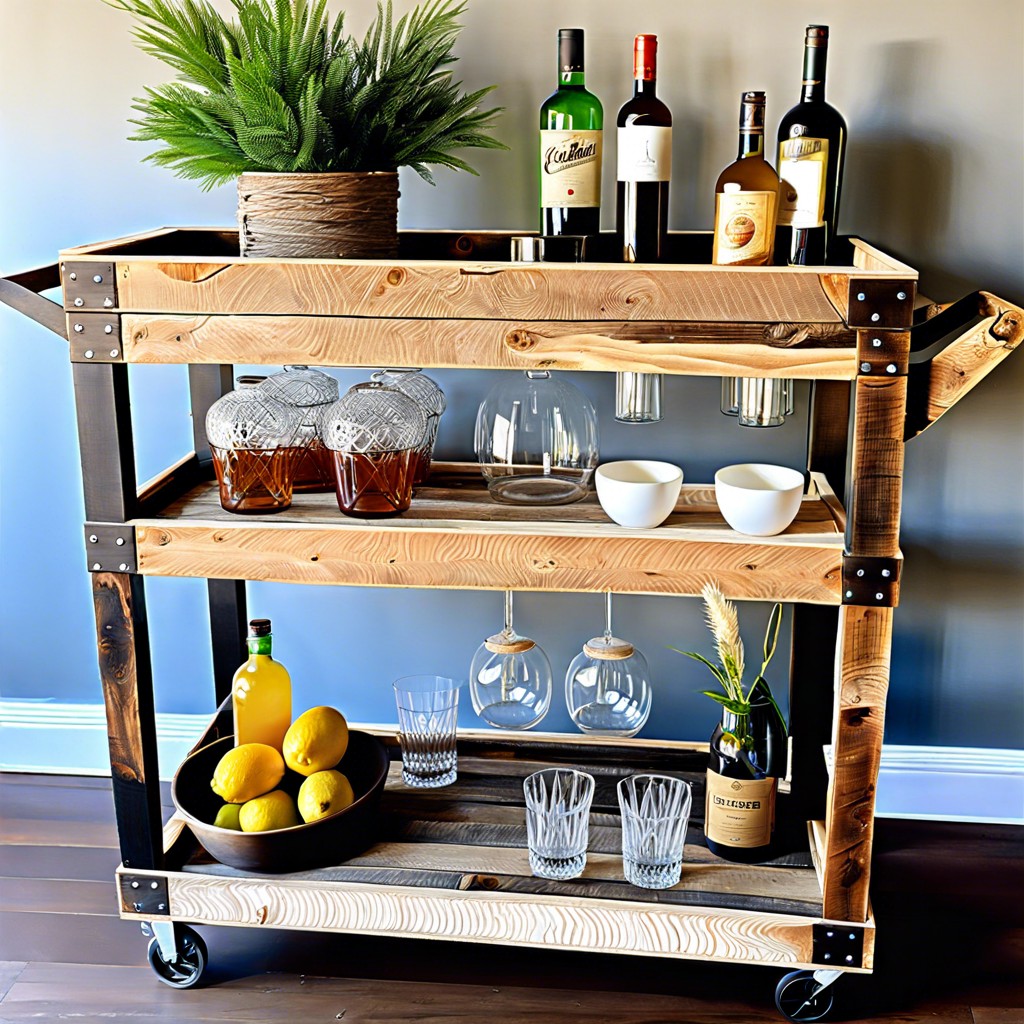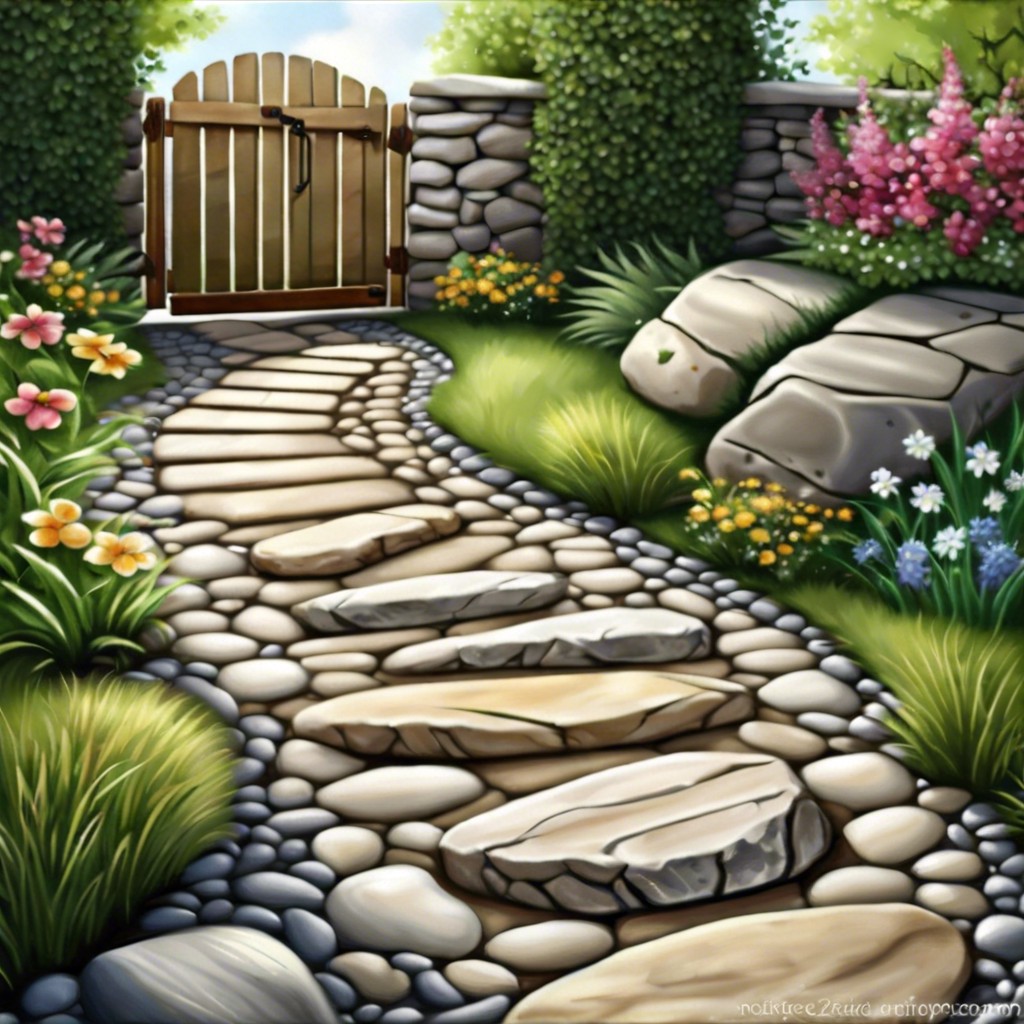Last updated on
So you’ve got a set of bar stools, used them for a while, but now some of them are wobbly. Here’s how to fix a wobbly bar stool. Read on!
The number one cause of a wobbly metal bar stool in most cases is bad assembly. So the first thing you may do is disassemble it and make sure you align the parts right before putting it back together. Make sure you lock the bolts tight.
If it’s a wooden stool, it’s possible that the joints got lose from wear and tear. If that’s the case, you will need to break it apart and glue it back together.
The first step to resolving the problem is to decide where the problem originates. You should start from the stool base and gently rock it until you figure out where and what the problem is.
But don’t hurry to break the stool apart or look for alternatives; it is possible that there’s another culprit entirely.
Uneven Floors
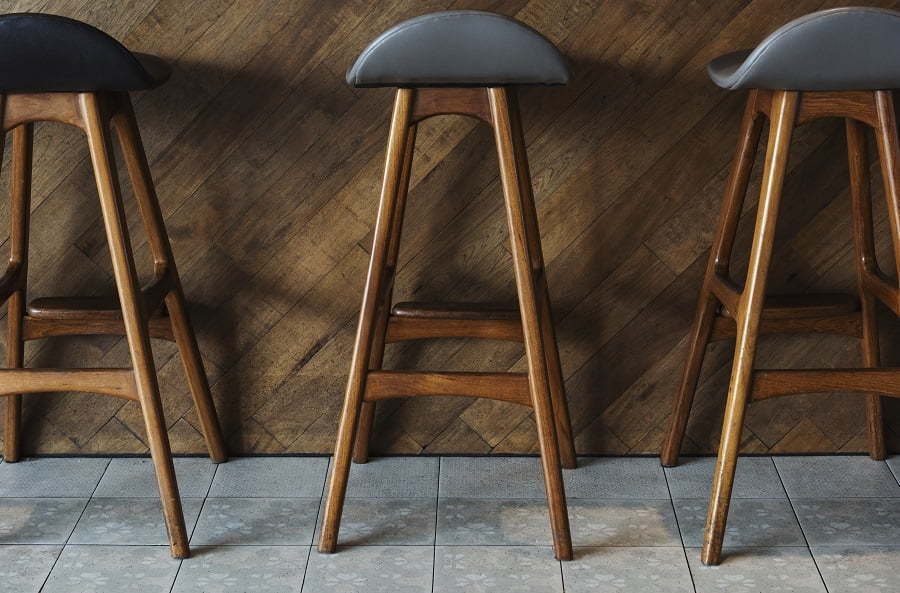
A common cause of wobbly chairs and tables, in general, is an uneven floor surface (for example, with old tile or slate floors.) If you have modern hardwood or laminate floors, this is not likely the root of the problem.
The best way to fix this is to add padding under the stool’s legs or move them to get around the uneven floor. Moving is hardly a solution if you have a kitchen bar or an island. Rather than patch the floor surface, a more cost-effective and non-destructive solution is adding more padding underneath the stool base. Add something to the pad to compensate for the rough surface.
Wobbly Wooden Stool

Because wooden chairs are glued together as opposed to fixed with bolts, the only way to fix them is to break them apart and glue them back together.
Open and clean the joints first. You can use a bar clamp to spread the stretchers slightly wider, revealing the tenon and mortise. Once the tenon is exposed, you can smooth its surface to make the new glue bond stronger.
Apply glue by using a small paintbrush to soak both surfaces. It helps to get the glue to heal faster. Use any polyurethane glue (Gorilla Glue). Thanks to this non-toxic solvent-free polyurethane glue that works on wood (sands well) but isn’t as specific as other wood adhesives. It is powerful in bonding to metals, stones, ceramics, and plastics.
Use clamps to hold the legs together. The glue expands as it dries. A little bit goes a long way, and you don’t need to be too generous. In this way, two clamps hold the stretchers in place until the glue dries.
Metal Frame Stool
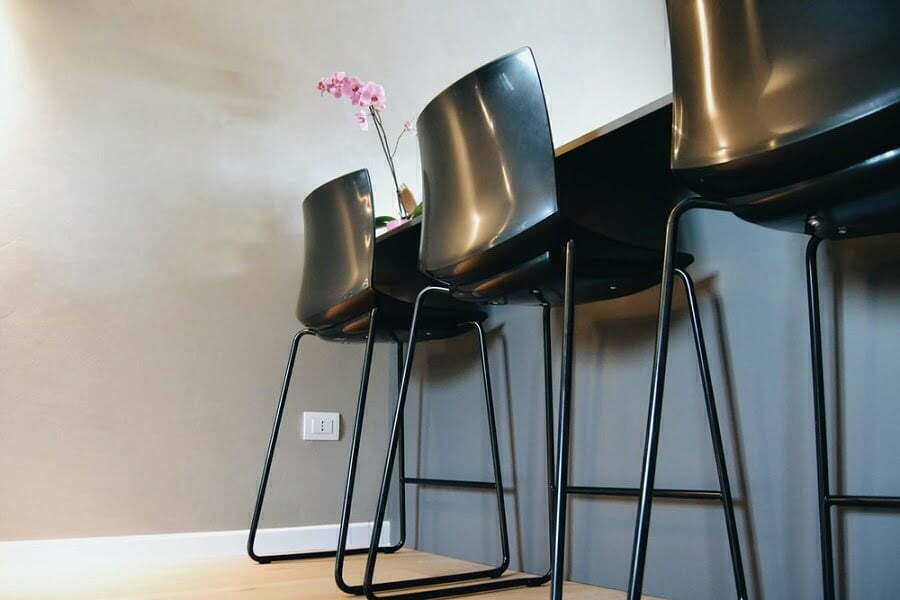
Metal stools are easier to fix because they have all the moving parts. You will simply have to find where the construction is loose and tighten the bolts respectively.
Legged Stool
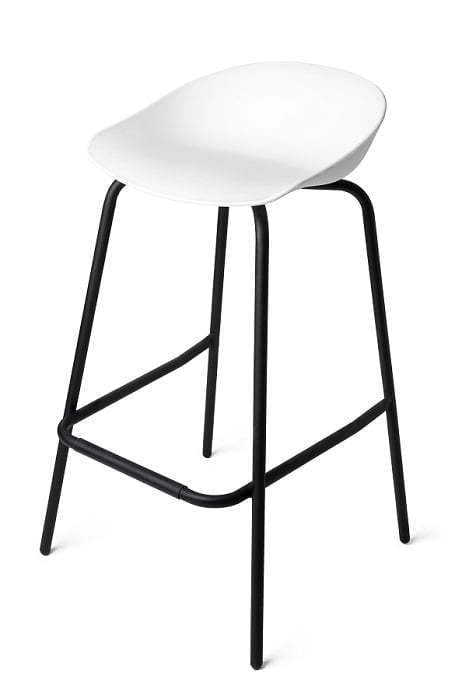
If it’s a legged stool, the problem is most likely at the connection between the legs and the seat. Find the bolts that got loose and tighten them. If that doesn’t help, disassemble the chair completely and try to realign it. If you can see the damage done to any parts by wear and tear, replacing the stool altogether might be the only option.
Swivel Stool
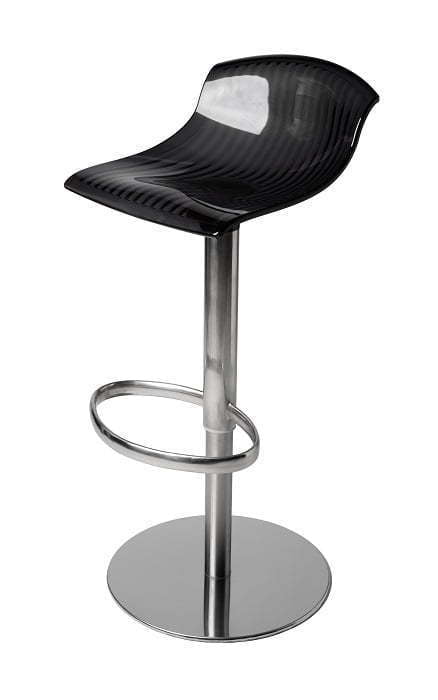
The swivel stool has more parts, so we may need to dig deeper to find the issue.
Movement Between the Floor and the Base
The base is the part that the frame is attached to on the bottom, and it stays on the floor. To protect the floor, some padding is added by design. If you have a stool that is not flush with the floor, the base padding may have been broken or torn and needs to be replaced.
The solution to this problem is straightforward — force the padding back into the base. Some glue might be necessary to hold it back in place. If it’s torn completely, you will have to replace it.
Movement Between the Base and the Column
Many stools would naturally have a spring in them to smooth getting on and off the stool. You must check if the column does not travel too far away from the base. Note that the stool’s base has powerful bolts to link it with the central pillar. As time goes by and these bolts loosen up slightly, they may become loose and result in a wobble.
Tighten each bolt back and forth until they all lock. If you have a wobbly stool with a domed base, the cause is seldom between the base and the frame. However, other reasons like too much weight on the base can often contribute to this.
Movement Between the Seat and the Column
In your case, the seat itself might be shifting rather than the frame. Check under the seat to see if it is fixed to the frame with screws tightly. The seat on a gas lift or hydraulic column is fixed with screws underneath. Perhaps the screws have got loose over time, allowing the seat to move on top of the column.
You’ll have to secure the screws around the base of the seat. Ensure the seat is centrally aligned to the footrest and tighten each screw more than once so there is no slack between the bolts.
The Takeaway
All furniture suffers from wear and tear. Even the best designs are prone to it. So it is possible to find that your bar stools get wobbly from time to time. If you discover this in time, you may easily fix the issue. The key is finding the source of the problem and tackling it correctly.
Oftentimes, the problem might not even be the stool but an uneven floor. That’s why it is important to find the culprit first.
Recap
